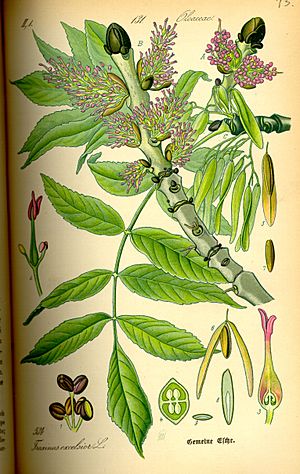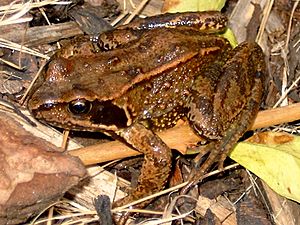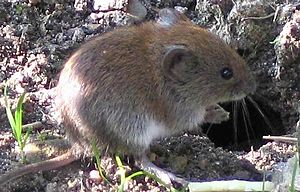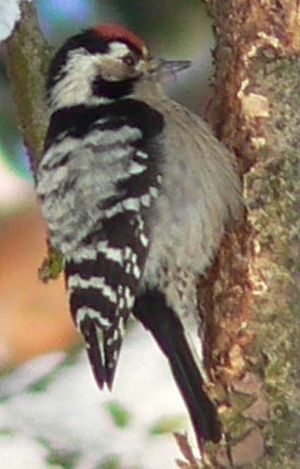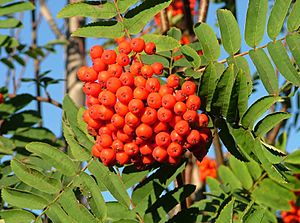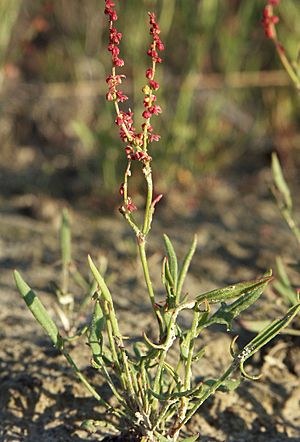Ashford Green Corridor facts for kids
Ashford Green Corridor is a special green area that stretches through the town of Ashford in Kent, England. It's made up of parks, sports fields, and other natural spaces found along the rivers that flow through Ashford. This area is so important for nature that it has been named a Local Nature Reserve.
Ashford has been growing bigger since the early 1800s. But as the town expanded, the land near the rivers was usually left undeveloped. This was done to protect the area from floods, and the Ashford Borough Council has kept these spaces green.
Contents
- Protecting Against Floods
- Amazing Wildlife
- A Rich History
- Exploring the Green Corridor
- Aylesford Green
- Bowen's Field
- Boys Hall
- Boys Hall Moat
- Buxford Meadow
- Bybrook Cemetery
- Church Road Playing Field
- Civic Centre North Park
- Civic Centre South Park
- Godinton
- Great Chart Wood
- Little Burton
- Newtown Green
- Queen Mother's Park
- Singleton Lake
- Swanton
- Victoria Park
- The Warren
- Watercress Fields & Leacon Road
- Willesborough Lees
- Images for kids
Protecting Against Floods
Because the Green Corridor areas are right next to Ashford's rivers, many of them help to hold floodwater. This protects homes and businesses from getting flooded. This is super important now, as floods seem to be happening more often.
Amazing Wildlife
The Green Corridor brings lots of wildlife right into the town! Ashford's rivers are surprisingly natural, even though they are in a town. They are home to many wild plants and animals. You might spot Common kingfishers, grass snakes, damselflies, and maybe even water voles. Ponds, like the one at Bowen's Field, attract cool amphibians like frogs and newts. Singleton Lake is a great spot for wetland birds, and Buxford Meadow is a wet grassland with a huge variety of plants, insects, and other creatures. Because these natural homes are so close to where people live, the Green Corridor has been named a Local Nature Reserve.
A Rich History
The Green Corridor is full of history! From the old manors of Singleton and Buxford in the west, to Boys Hall Moat (a very old monument) in the east, there are many stories to discover. Victoria Park has a beautiful fountain and special trees. The 'Watercress Fields' and Martyr's Field also have interesting pasts. Many parts of the corridor were farms until recently, connecting us to Ashford's history as a farming market town.
Exploring the Green Corridor
You can see the different parts of the corridor on the Ashford Green Corridor website map.
Aylesford Green
Aylesford Green is a nice place for relaxing and playing. It has different natural areas, including a wide strip of tall plants along the Aylesford Stream. This area is an important home for many small creatures like insects. There's also a small wooded area with ash and alder trees. You might see wood mice and long-tailed tits here. The site connects to South Willesborough by a bridge over the High Speed 1 railway line.
Bowen's Field
Bowen's Field is a fun outdoor area next to the Great Stour. It was one of the last places in Ashford to be farmed. This area was also next to the town’s lido (an outdoor swimming pool) built in 1867, which was the biggest in Britain at the time. Now, it helps store floodwater and has a large pond. You can find banded demoiselle, blue-tailed damselfly, azure damselfly, smooth newt, and common frog here.
Boys Hall
This site offers great views of the North Downs and the town of Ashford. It's known for its oak and hazel trees. Many types of dragonflies and damselflies have been seen here, including the emperor dragonfly and ruddy darter. A bridge over the High Speed 1 railway links this site to Boys Hall Moat.
Boys Hall Moat
This is a very old Scheduled Ancient Monument from the 1200s. It's an island surrounded by a moat, which was once the site of a building. Old trees on the island are roosting spots for many common birds.
Buxford Meadow
Buxford Meadow is next to the Great Stour river. It's a wet meadow with different types of willow trees. There's a pond in the middle that's home to common frogs, toads, and smooth newts. An amazing 12 types of dragonflies have been seen here (that's 25% of all UK species!). It's also great for small mammals like field voles, pygmy shrews, wood mice, and bank voles. The Stour Valley Walk path goes through a wet woodland area here.
Bybrook Cemetery
This area has many old trees and a special group of memorial trees called 'Cherry Garden Wood'.
Church Road Playing Field
Church Road playing field is a quiet park with a play area, located between Willesborough and Sevington.
Civic Centre North Park
The East Stour and Great Stour rivers meet at Pledge’s Mill, which is at the north end of this park. There has likely been a mill here since 1086! The park features special pollarded willows, which are important homes for many invertebrates (creepy crawlies).
Civic Centre South Park
This park includes a riverside area that is part of the Local Nature Reserve. Even though it's a busy area near the skate park, surveys have shown that water voles live in this part of the East Stour river. The bridge over the river is a good spot to see moorhens and grey wagtails.
Godinton
On the edge of Ashford, this historic parkland is great for walks along the Greensand Way or the Stour Valley Walk. Godinton House also has its own trails. The parkland has many untouched natural areas that support lots of wildlife. Because of this, Godinton Park is a special SNCI (Site of Nature Conservation Interest). Old trees and woodlands here are good for nesting birds like the lesser spotted woodpecker. The river is home to the white clawed crayfish, and kingfishers are known to fly along this water.
Great Chart Wood
This is a new 23,000 square metre woodland, planted and looked after by the Woodland Trust. It was created in 2000 as a new community woodland close to Ashford. Local people helped plant native trees and shrubs like oak, ash, rowan, and hornbeam. Before planting, an archaeological survey found some interesting old earthworks, which were left untouched.
Little Burton
Here you can walk along the river and into an open space next to the Little Burton housing estate. The river habitats are good, and there are many old trees, including the type of willow used for making cricket bats! New woodland has been planted, and a large pond created. There's also an interesting wetland area near the railway.
Newtown Green
Newtown Green has open green spaces for playing and organized sports. Old trees form the edge of the site, and the Aylesford Stream runs along one side. You might see Ruddy darter, banded demoiselle, blue-tailed damselfly, and common blue damselfly here.
Queen Mother's Park
This park is a useful path for walkers and cyclists from Bybrook and Kennington to the town centre and other parts of the Green Corridor. The banks of the Great Stour here have wide areas of riverside plants and blocks of old native trees. There's a small woodland garden where you can hear European green woodpeckers. An old map from 1876 shows that this land was probably used for sheep grazing. A plaque at the entrance tells the sad story of 16th-century martyrs who were punished for their religious beliefs.
Singleton Lake
Singleton Lake is a man-made fishing lake with areas of willow and alder trees around its edges, as well as small areas of reedbed. At night, Daubenton's bats can be seen flying over the water. There are two sculptures by Antony Gormley (who created the famous Angel of the North sculpture) and a boardwalk. Singleton Lake is home to many common birds, plus some you might not see elsewhere in the Green Corridor, like great crested grebes and reed warblers.
Swanton
This area has many footpaths, letting you explore interesting wet fields and damp pastures. At Swanton Court, you can see a mediaeval moat from public paths. The bird life here shows how much water there is, with birds like teal and heron often seen.
Victoria Park
Victoria Park is a formal park with old, decorative trees and a small woodland area. Some trees were planted in the early 1900s to remember local people and members of the royal family. A large fountain in the park was given to Ashford by a local art dealer. It was originally designed for the Great Exhibition! There's also a small pond with a rocky garden at the bottom of the park.
The Warren
The woodlands here, with their old oaks, hide the site from busy areas, making it a green haven. The Warren is also important for wildlife. The grasslands are natural and have plants like sheep's sorrel and bird's foot. The ponds are home to amphibians, water insects, and the rare water violet. Many different birds also live here.
Watercress Fields & Leacon Road
Watercress Fields has football pitches and a play area, as well as places for casual fun. It's an important link between south Ashford and the town centre. The river here has a natural shape with many bends and wide areas of plants that support riverside species like cuckoo flower and alder trees. The river itself is home to water voles. In the past, it's thought that watercress might have been grown here. Further along the river at Leacon Road, there are some sculptures of water wildlife and an old crossing point.
Willesborough Lees
The Willesborough Lees is a large area of wetland, pasture, rough grassland, scrub, and woodland, covering nearly 100 acres (0.4 km²). It's a very rich area for wildlife. You can find rare plants here, like white sedge, which has only been found in two other places in Kent. This area is also good for mosses and liverworts.
Images for kids


